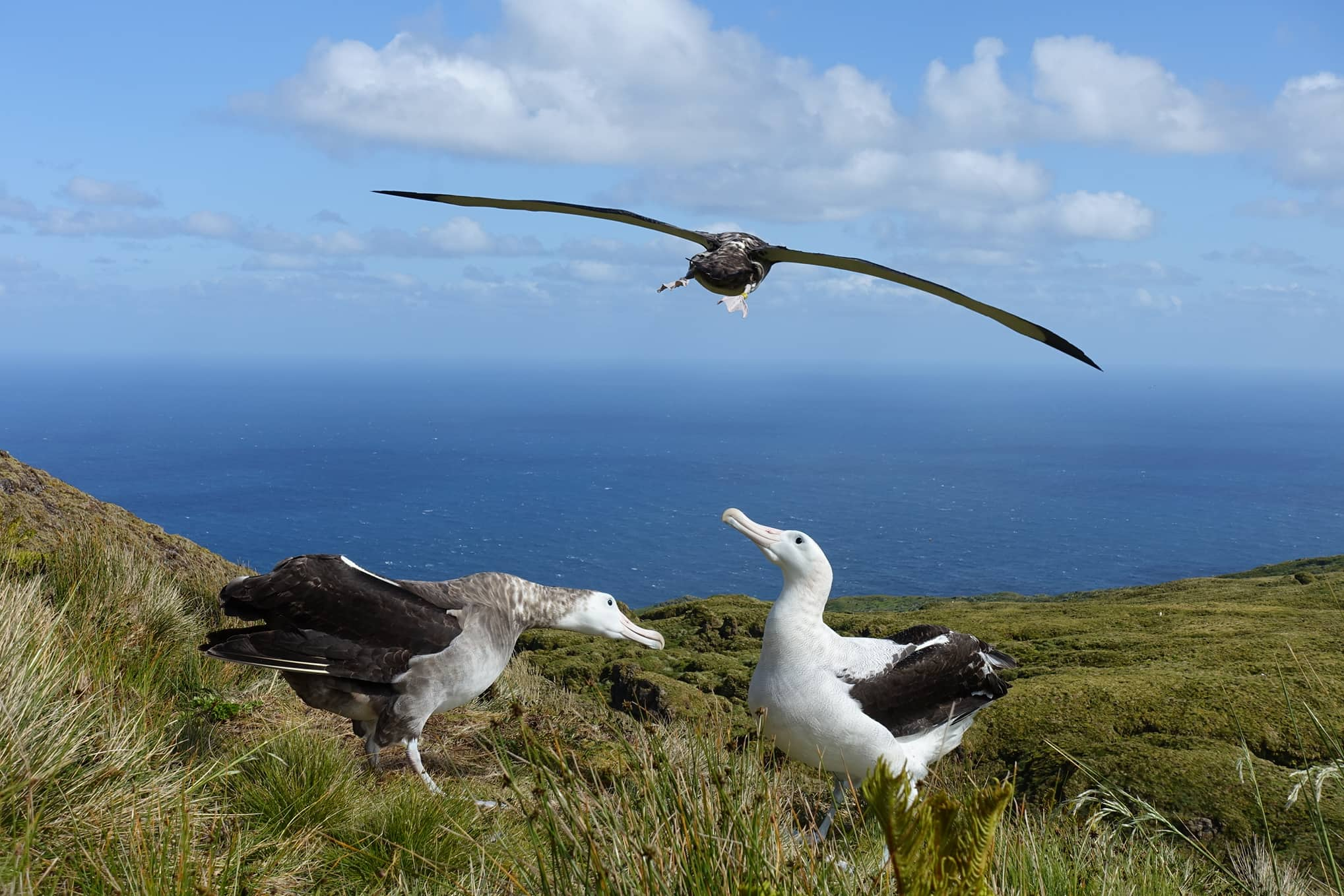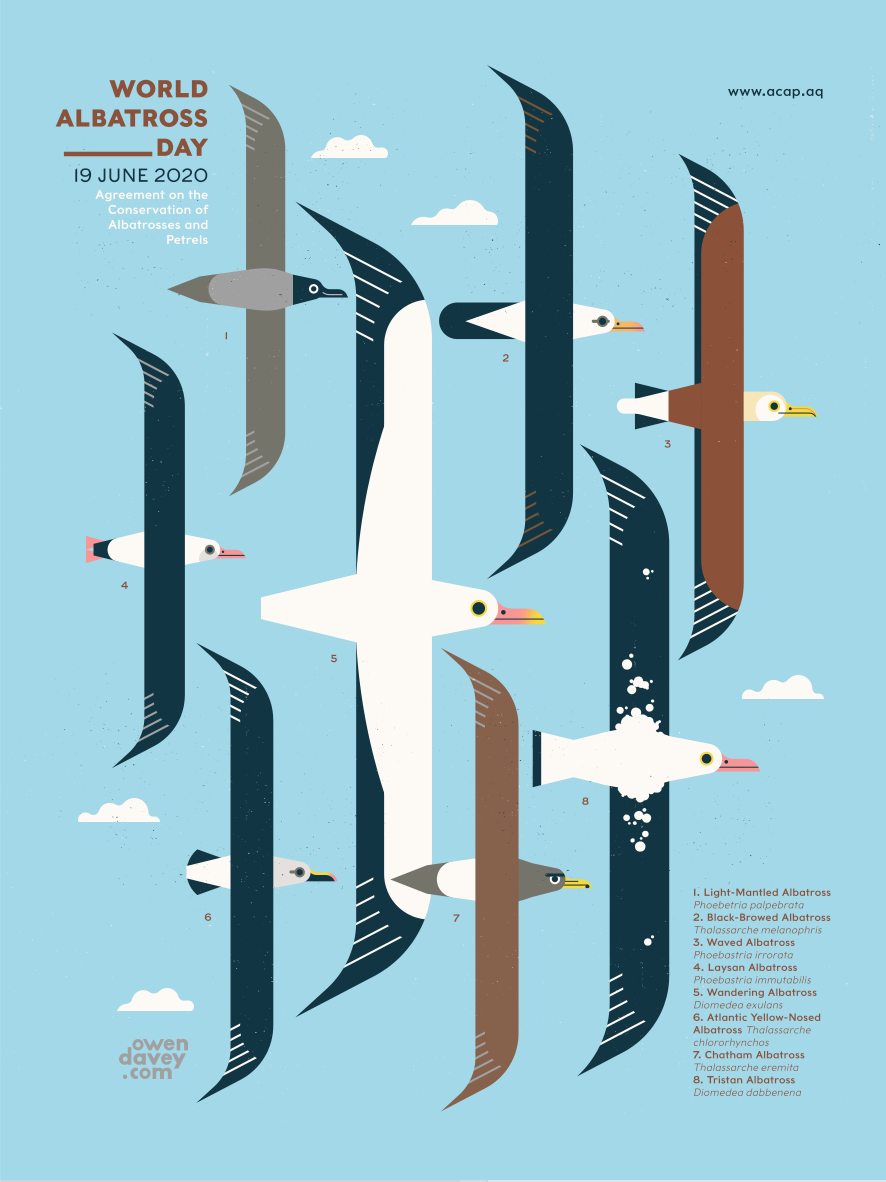
Tristan Albatrosses on Gough Island, photograph by Michelle Risi
The first team members of the Gough Island Restoration Programme (GIRP) have left for the island. The main aim of the programme being led by the UK’s Royal Society for the Protection of Birds (RSPB is the eradication of the island’s introduced House Mice Mus musculus by an aerial poison bait in a few months’ time. The mice have taken to attacking seabird chicks and are deemed to be pushing some of them, notably the Critically Endangered and near-endemic Tristan Albatross Diomedea dabbenena, to extinction. The start of the GIRP has come after more than a decade of on-island research and several years of planning to put together the eradication effort.

The advance party sailed on the New Zealand-registered expedition yacht Evohe from Cape Town harbour on Tuesday last week. ACAP Latest News met with some of the team a few days before to wish them well and to ask them to courier a couple of items to the South African meteorological station on the island on behalf of the Agreement. With the support of the Antarctic Legacy of South Africa an A3 laminated version of Owen Davey’s World Albatross Day poster has been printed and is now on its way to Gough, there to be displayed in the small laboratory in Gough House, the main accommodation block at the station. Michelle Risi, one of three field biologists currently monitoring the Tristan Albatrosses (and other seabirds) on the island, is the person who first suggested to ACAP that it consider inaugurating a World Albatross Day, and she also made the contact that resulted in Owen Davey producing his poster free of charge. Appropriate, then, that she will be able to continue her lab work next to the ‘WAD2020’ poster she instigated.

Michelle Risi records the band number of a displaying Tristan Albatross on Gough Island
With thanks to Kate Lawrence, Gough Island Restoration Programme and Ria Olivier, Antarctic Legacy of South Africa.
John Cooper, ACAP Information Officer, 25 February 2020

 English
English  Français
Français  Español
Español